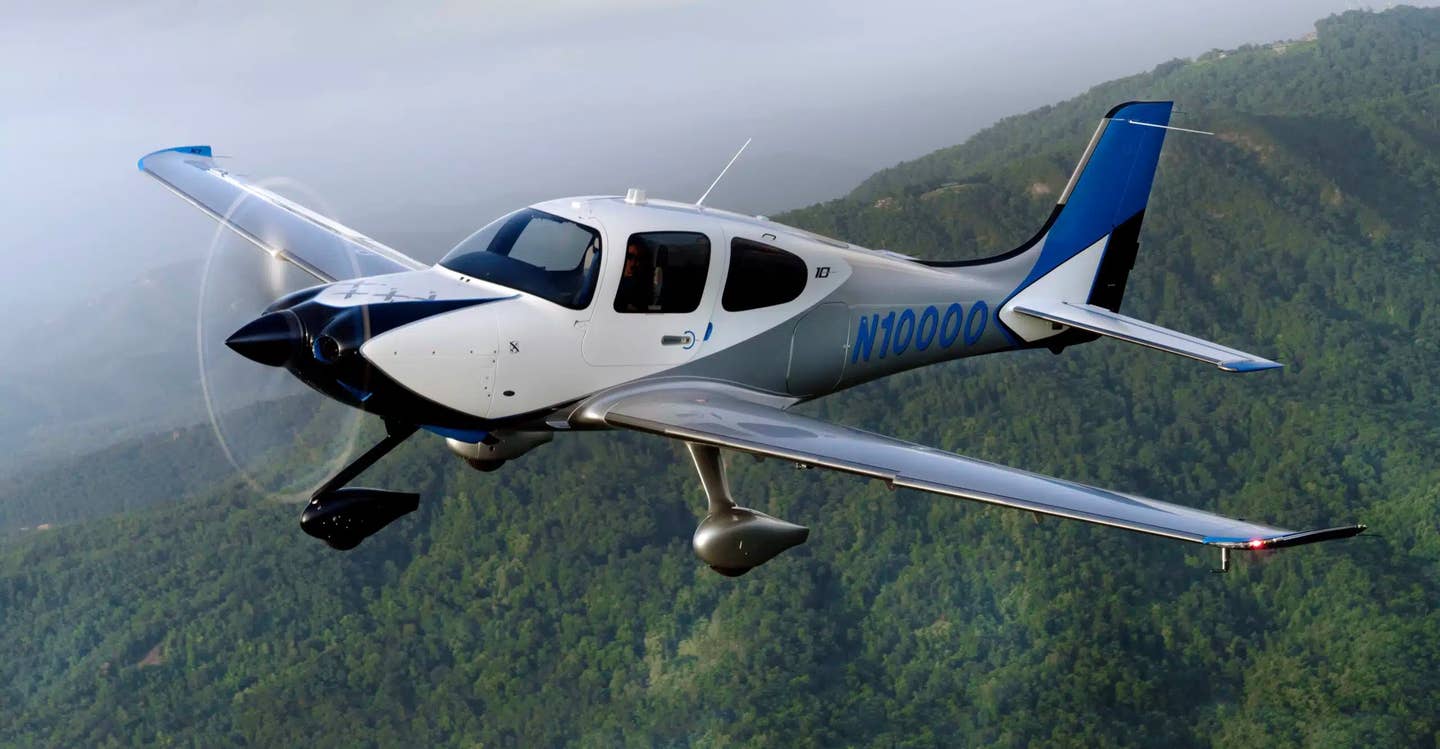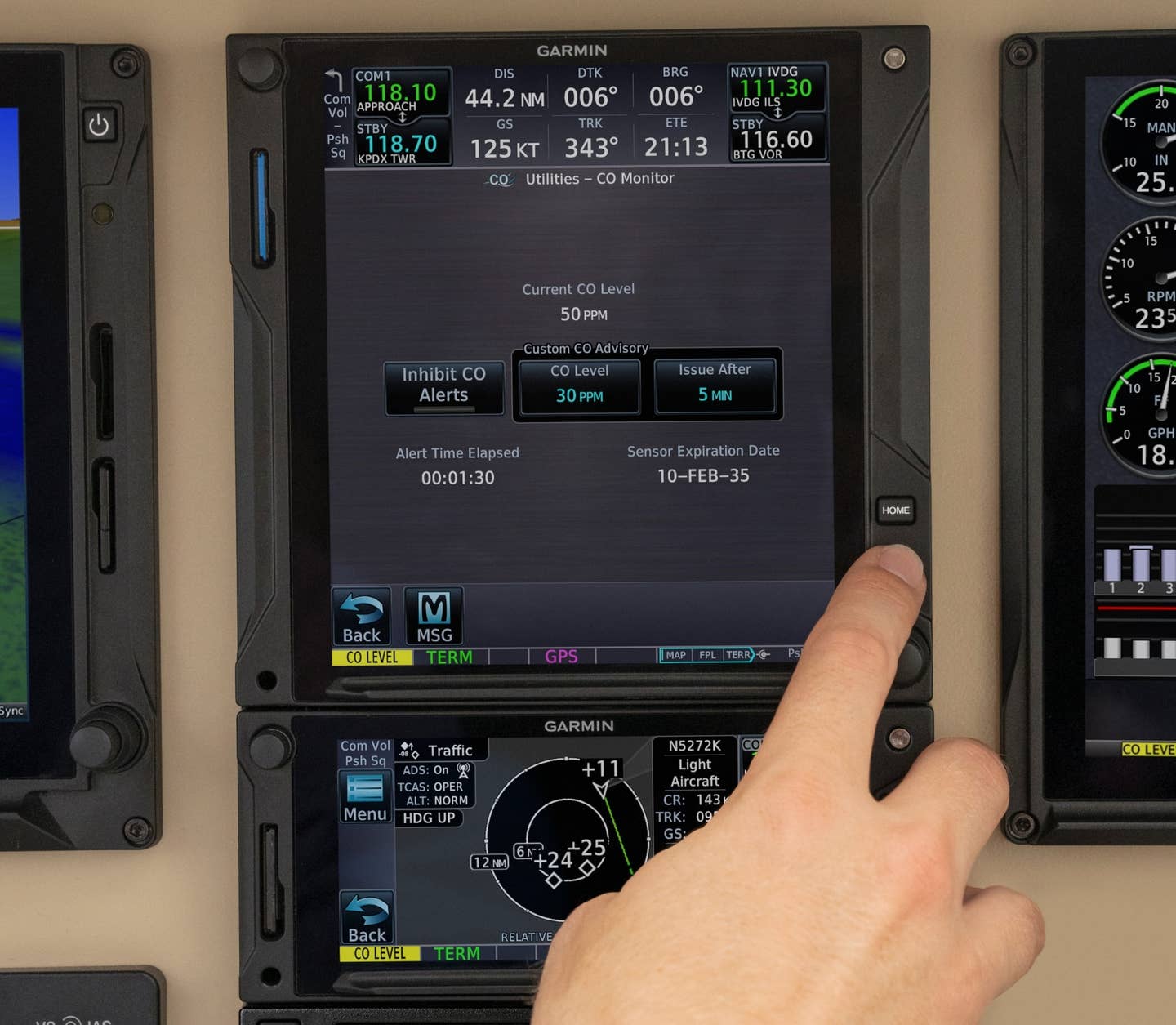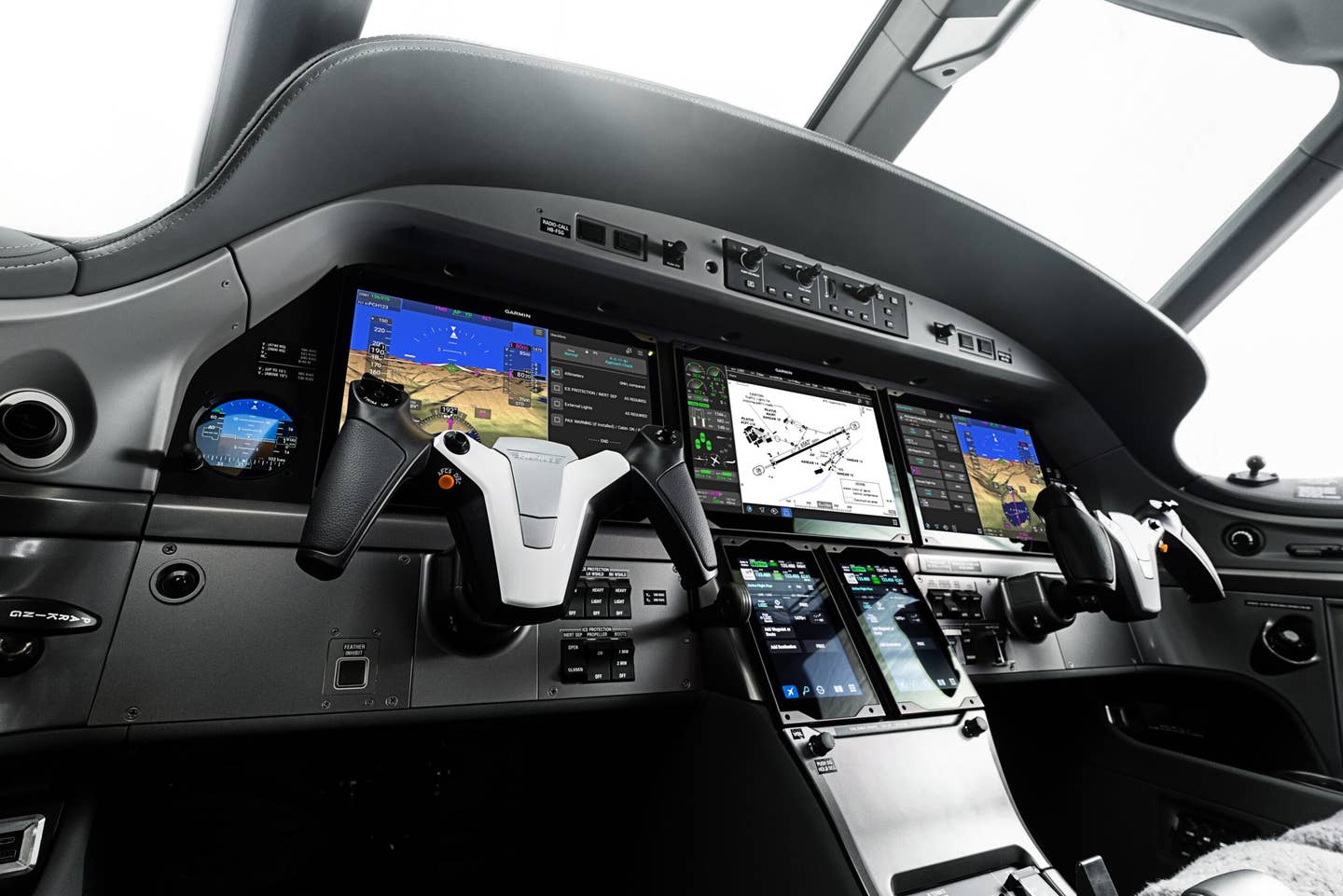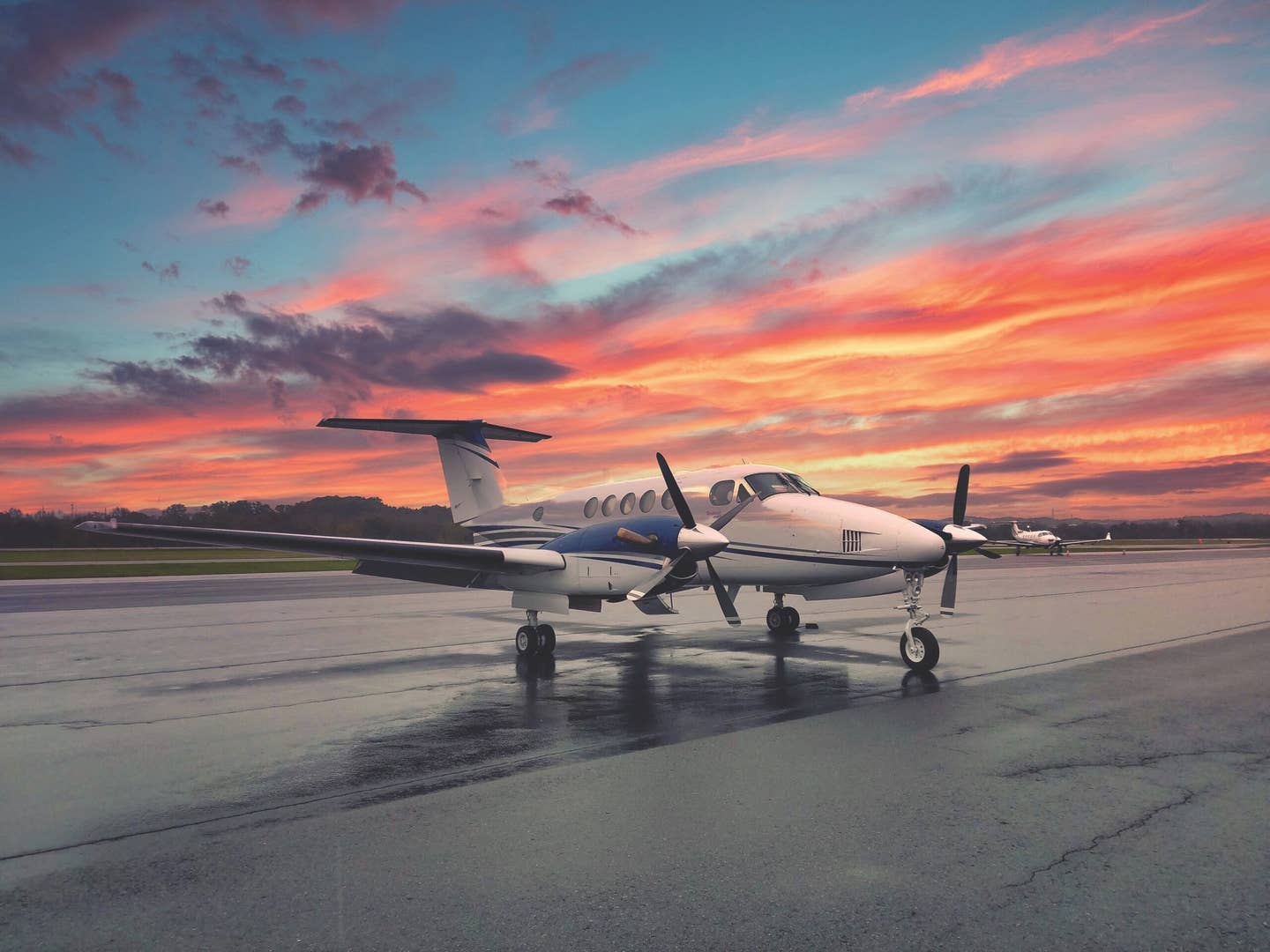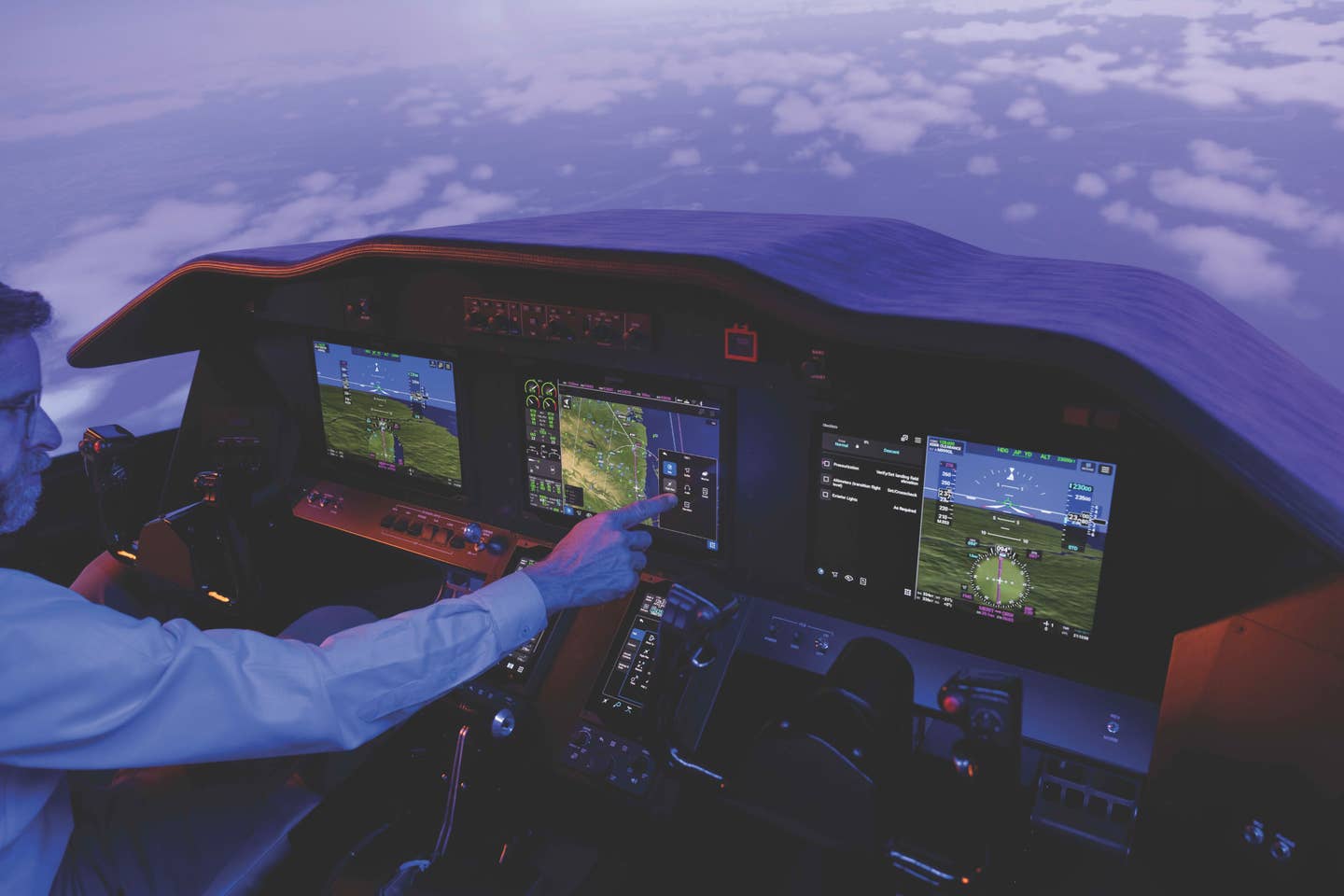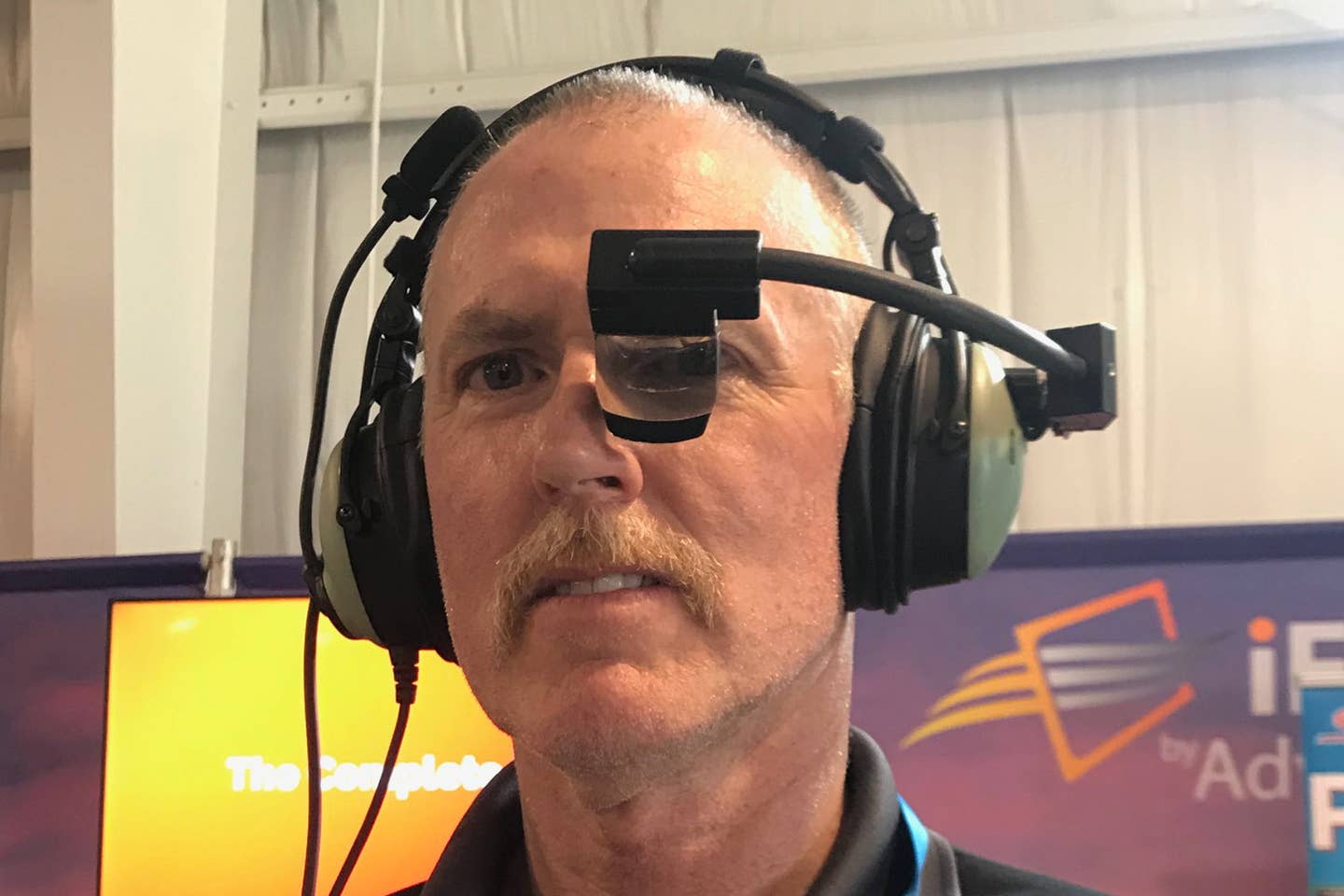
iFly’s Dave St. Clair models the SA prototype at AirVenture. Rob Mark
Heads up displays (HUD) aren't exactly revolutionary. Commercial, business jet and military pilots have been using them for years. Helicopter pilots often use wearable eye-piece versions attached to the pilot's helmet due to cockpit real-estate limitations and the fact that helicopter pilots are often moving their heads around during flight.
A heads up display projects the aircraft’s operating parameters like airspeed, heading, altitude and rate of climb and navigation data on to a transparent piece of glass that’s placed in between the pilot’s eye and the windscreen so they can monitor the flight AND look out the window for traffic. Technological magic allows the pilot to see the HUD data without the need to alternate their focus on the glass and the outside world. The latest HUDs have even managed to include synthetic vision.
HUDs are still relatively new to GA aircraft, often because of cost alone. Mike Browne led the design of the F-35 HUD and the F-35 cockpit display while he was still working with Kaiser Electronics. He's now general manager of vision products for Los Gatos, California based SA Photonics. SA builds vision products like augmented and virtual reality displays for the military. Brown told Flying the cost of a HUD for a single F35 costs about $600,000. SA Photonics unveiled a prototype of a wearable GA HUD the company believes it could have ready for sale before the end of 2020. SA was already contracted with the Air Force to solve problems the branch might not even know it had and to create an answer that would also have commercial applications. Browne said while last year was his first AirVenture, he left knowing there was a way SA could leverage its previous Air Force contract work for the GA marketplace.
SA’s single-eyepiece prototype, “is now attached to a David Clark headset a DC, to allow pilots to see information heads up and keep their eyes outside to maintain situational awareness.” Most HUDs include navigational information in their displays, a problem SA knew they couldn’t handle inhouse. Browne said he tried to partner with some well know GA navigation information providers but found them unwilling to work with his small division. “And many of the smaller ones I spoke to didn’t have the multi-platform support,” they envisioned for their GA HUD.
Luckily Browne met Dave St. Clair at AirVenture and a new collaborative relationship was born. St. Clair runs McKinney, Texas-based iFlyGPS, a navigation information provider for EFBs that already includes synthetic vision and moving map capabilities. St. Clair said, "We're providing the navigational smarts for SA's prototype HUD." Browne said, "iFlyGPS is really easy to work with. I can just call Dave and ask for a software update for instance and I get it pretty quickly."
The result is a 2-inch square HUD that attaches to most any current GA headset. The new system uses a wireless control box for the cockpit link that could sit on an empty seat. I tried on the HUD at SA Photonics AirVenture booth and found it takes a bit of getting used to, but then my experience has been with larger HUDs that hang from the cockpit ceiling. The SA HUD is certainly easy to wear and projects data in green glow-like digits and symbols that were easy to read. I wasn’t quite certain I was looking through the device correctly since I wear glasses with progressive lenses. Browne said different types of frames require slightly different perspectives.
What I could tell though, even from my brief experience with the SA HUD prototype, was that the work the company had done for the Air Force and its relationships with company’s like iFlyGPS are going to soon create a finished HUD that will work well for pilots flying a Cirrus or a TBM or a Piper Archer. Browne said the target price for the finished wearable HUD is about $10,000.

Sign-up for newsletters & special offers!
Get the latest FLYING stories & special offers delivered directly to your inbox

